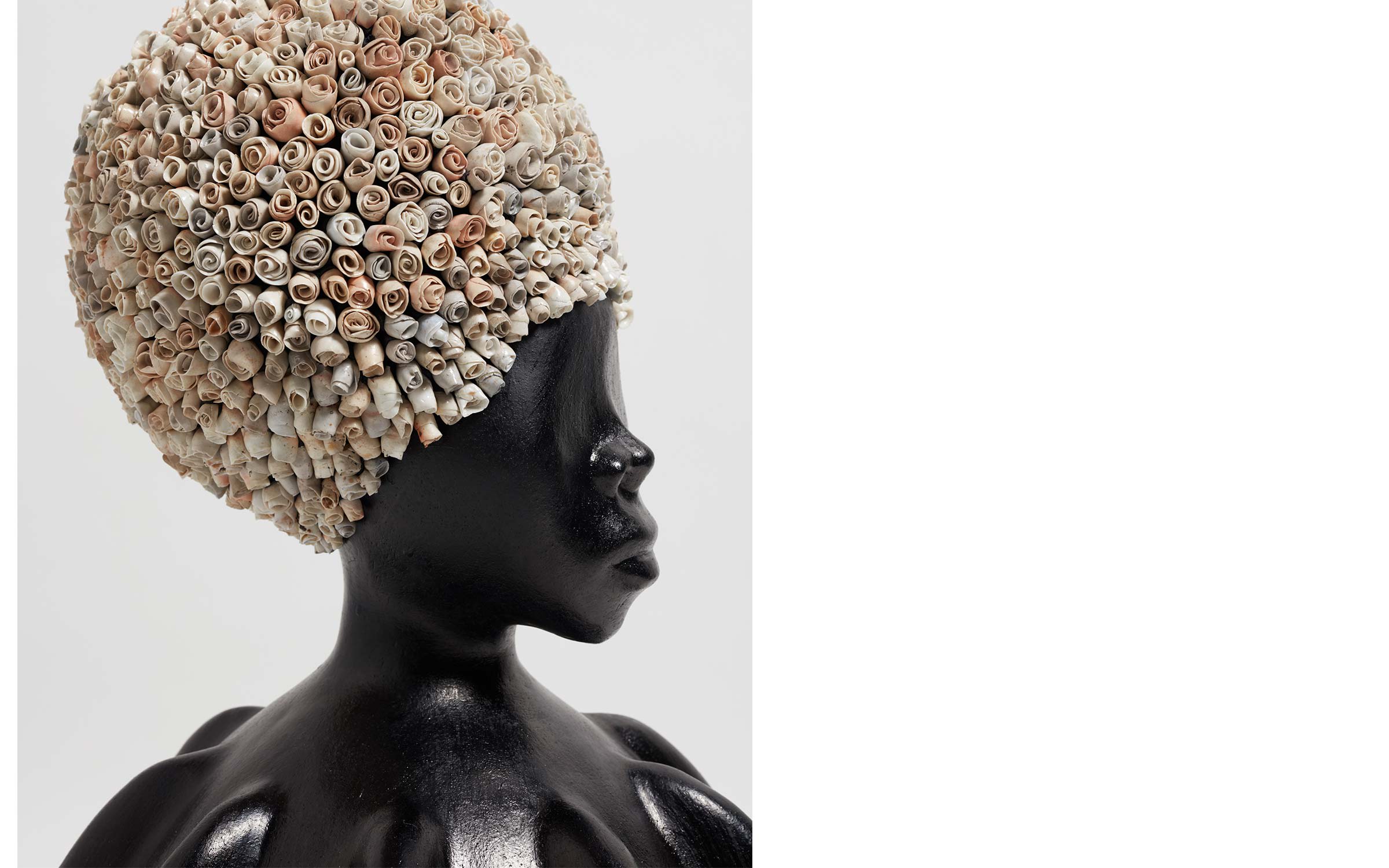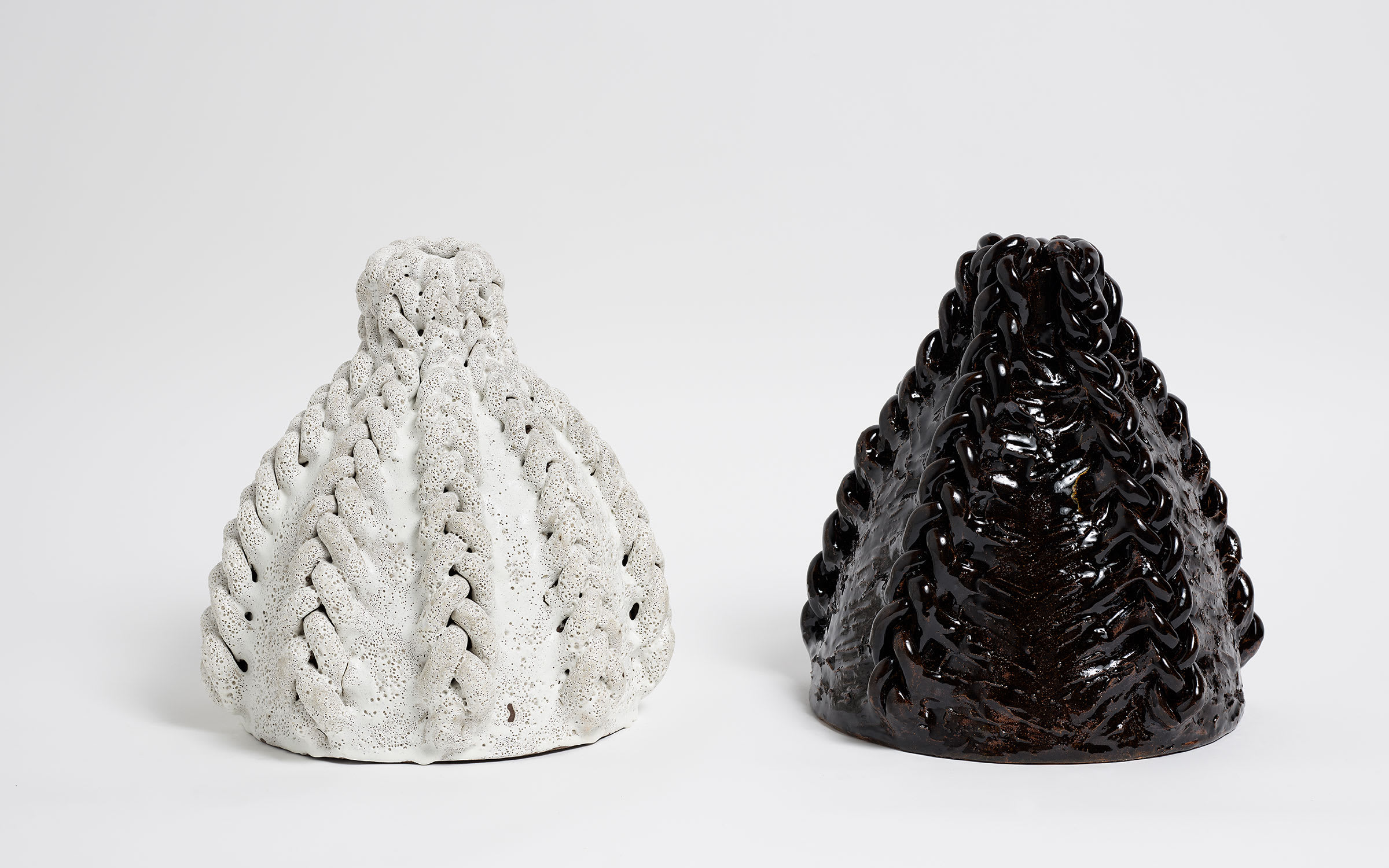Simone Leigh: on the rise
How outsize African clay sculptures of stereotype-baiting goddesses placed the artist on the artworld's radar
When Simone Leigh first began exploring the subjective concerns of black women through the medium of ceramics in the early 1990s, she was warned by other ceramicists that she would never be accepted in the contemporary artworld; but her work, shaped by ethnographic research, feminism and racial politics, never really fit in with the ceramics world either.
Times have changed for both the medium – now regularly exhibited in contemporary art galleries – and the artist, who, at 51, suddenly finds herself an artworld star. Leigh is the first artist commissioned by New York City’s High Line to make a monumental public sculpture for a plinth anchoring the last section of the park, opening next April. This fall she had a debut show at Luhring Augustine with new ceramic female sculptures, in which three of her large-scale pieces were snapped up by as many institutions. And in October she won the Guggenheim’s Hugo Boss prize, only the second African-American woman (besides Lorna Simpson) ever to be shortlisted. She will have a solo exhibition of new work at the museum, which opens April 19, 2019.

‘I don’t have the pedigree of most artists and I’m a single black mother,’ says Leigh, at her studio in the Bedford-Stuyvesant section of Brooklyn, slightly bemused and overwhelmed by all of the new attention and with invitations to participate in biennials next year, including Desert X in February and the Vancouver Biennale in June. Leigh grew up in Chicago and studied art and philosophy at Earlham College in Indiana, before she discovered African ceramics during a Smithsonian fellowship and lived in a yurt in Virginia for a year learning how to fire a Japanese anagama kiln. ‘There have not been many people like me on the Hugo Boss prize list,’ she says.
It was her ‘clarity of vision’ that was persuasive to the jury, according to Susan Thompson, assistant curator at the Guggenheim, who steered the process. ‘Simone’s been working in ceramics long before it was considered even legitimate within the mainstream artworld, and this focus on black women as her primary audience has remained steadfast,’ says Thompson. ‘I’m interested in the ways that her work explores how strategies of privacy and invisibility have been used by communities of black women.’
Leigh will claim her most public platform to date with the High Line piece, where her distinctive vision of black beauty will rise at the center of 30th Street and 10th Avenue on the elevated park, visible in all directions from the street. The 16-foot-high goddess, which the artist scaled up from a tabletop bust and modeled at full size in 9,000 pounds of clay before casting in bronze, has long cornrows and Africanized features. As always with Leigh’s busts, the eyes are vacant but still powerful, calm yet determined. The bell-shaped torso is suggestive of the traditional houses made by Mousgum communities in Cameroon.
‘These houses are the epitome of what people think of when they describe an African hut,’ says Leigh, who often uses imagery with racially derogatory connotations, including watermelons and cowrie shells, as a point of departure ‘to see if I can rewrite it a little bit.’ The piece, titled Brick House, was named, as Leigh says, not after the Commodores song as previously reported, but after the ‘colloquialism that stretches across the diaspora. Every black community knows what a Brick House is.’
Leigh’s proposal for the plinth was selected from 12 finalists by Cecilia Alemani, director and chief curator of High Line Art. ‘If you think of the debate right now about the removal of so many sculptures and negative figures from our public spaces, Simone does offer an answer to what and who deserves to be commemorated on pedestals,’ says Alemani.
Brick House will be on view for 18 months.
Leigh’s latest ceramic busts, called ‘Face Jug Series,’ some shown at Luhring Augustine poised atop hoop skirts composed of raffia, conflate women’s bodies with utilitarian vessels in surreal and uneasy tension. These were inspired by her research for ‘Raid the Icebox Now,’ on view next fall at the Rhode Island School of Design Museum, which invited 10 artists to curate presentations using its collections. There, Leigh discovered a Greek-Egyptian bronze bust of a black boy’s head as a lidded jar found in storage. ‘Fusing the black body with a tool was very common,’ says Leigh, who also found, in the museum’s collection, what some consider to be Manet’s first painting to include Laure, the black model for the maid in his 1863 painting Olympia. For the exhibition, Leigh plans to juxtapose her own abstracted manifestations of Laure with collection works ranging from antiquity to contemporary, as a contemplation of the black figure in Western art across time
While Leigh considers herself a sculptor at heart, she has made two widely acclaimed social practice works, modeled on the secret societies of nurses and volunteers who historically provided care to black women shut out of mainstream health services. Her Free People’s Medical Clinic, a 2014 Creative Time project staged in the former Brooklyn home of the first African-American woman to have an OB-GYN practice in New York State, and The Waiting Room, at the New Museum in 2016, offered services including blood pressure monitoring, yoga classes and acupuncture, along with Dunham-inspired dance.

For the Berlin Biennial this year, she regrouped many of the players in these works for a video based on the TV series M*A*S*H, recast entirely with black women. It is a meditation, at times humorous, on the survival skills of black women in the setting of an army surgical unit. ‘In order to survive or succeed, you have to take care of yourself, and a lot of times that means you might have to walk away from someone else who’s sick,’ says Leigh, who juxtaposed women doing yoga with people laid out on stretchers, ignored. ‘Black women have typically made really poor decisions for that front, of giving to others to their own detriment.’ She hopes to make a sequel to her M*A*S*H video with the same collaborators next year.
Leigh attributes some of the new interest in her sculpture to these performance-based works, which have given people a different lens for understanding the ceramics. ‘When I was doing the Free People’s Medical Clinic, I was trying to imagine the ideas I was already working with but just live,’ she says.
Shedding light on some of those underlying connections, she describes how she fires her ceramics in atmospheric kilns, where she can change the color and texture of the objects by altering the environment with salt or wood ash. ‘Most people don’t understand why that might be really similar to identity formation,’ she says. ‘People may not know how fraught Orientalism is in ceramics and the irony of trying to use these processes to do something different.’

Simone Leigh’s work will be shown by Luhring Augustine in the Galleries sector of the 2018 edition of Art Basel Miami Beach. Discover more artists and galleries participating in this year’s Galleries sector here.
This article was taken from Art Basel Miami Beach magazine. The magazine will be available at the show and in select locations around Miami Beach.
Top image Simone Leigh trophallaxis, 2008-2017, © Simone Leigh; Courtesy of the artist and Luhring Augustine, New York. Photos: Farzad Owrang.

